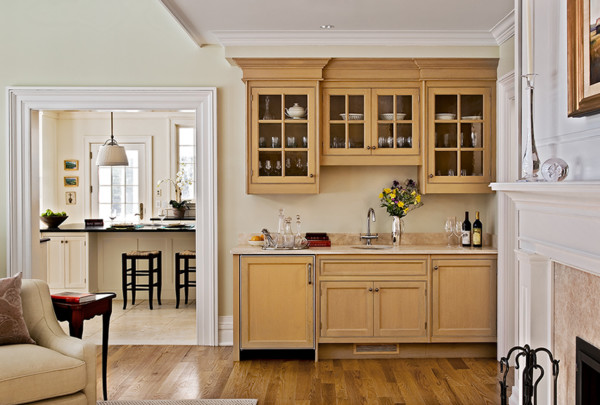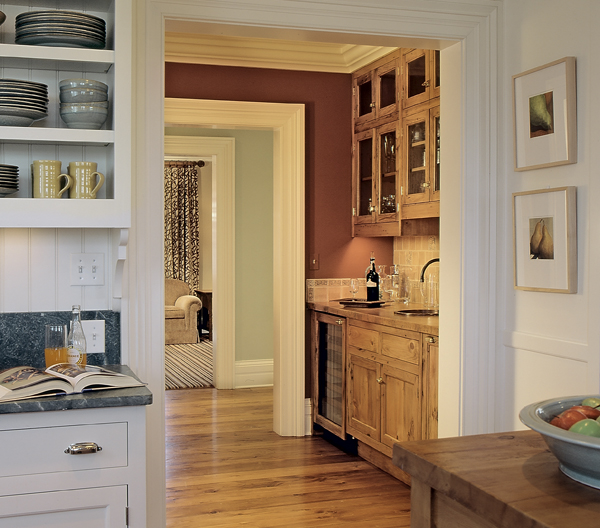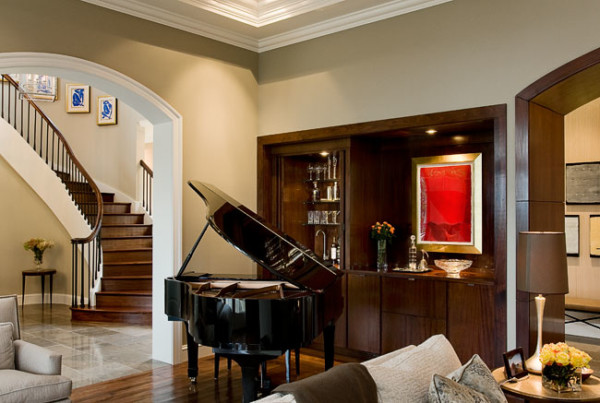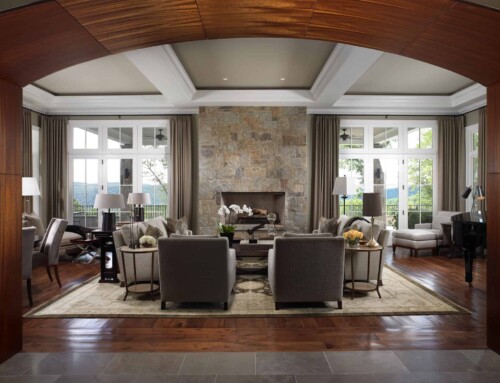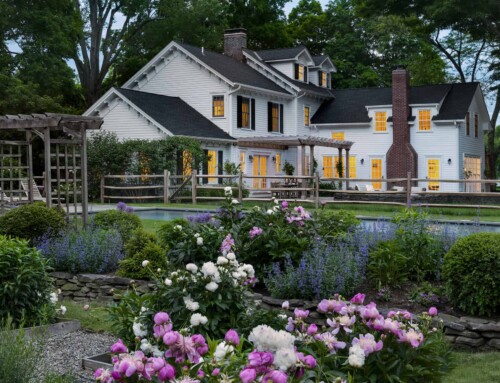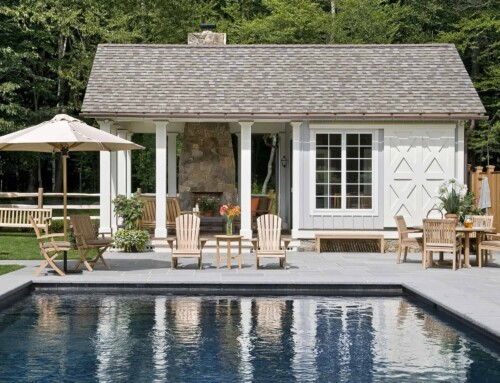Whether you are serving a Diet Coke, a glass of wine, or a cocktail, a wet bar simplifies the process. In one place you can have all the raw materials for festive refreshments, and at the same time contain the mess. A wet bar can be hidden behind doors like a closet, or it can be a place to display glasses, drinks, and the tools of a bartender. Added convenient features might include a coffee station complete with cups and espresso machine for round the clock service.
In wet bars we design, we often include a sink, an icemaker, mini refrigerator, and/or wine cooler, as well as plenty of storage. Durable counters and good lighting are a must. Limestone or marble countertops are very beautiful, but can be stained or etched with lemon juice or other acidic liquids.
The overall design of the wet bar should take cues from the room it serves, but like its function, a wet bar is a place where a homeowner can have some fun. We have used rustic, reclaimed wood for cabinets as well as polished mahogany. Glass doors make for convenient display areas, which can be lit from above or below. A painted finish allows for maximum flexibility when matching the rest of the room.
Wet bars are meant for daily use, and are often more convenient than the kitchen for serving all kinds of beverages. Holidays especially, are a time for entertaining friends and family, a wet bar just makes it a little easier for the host and hostess.

